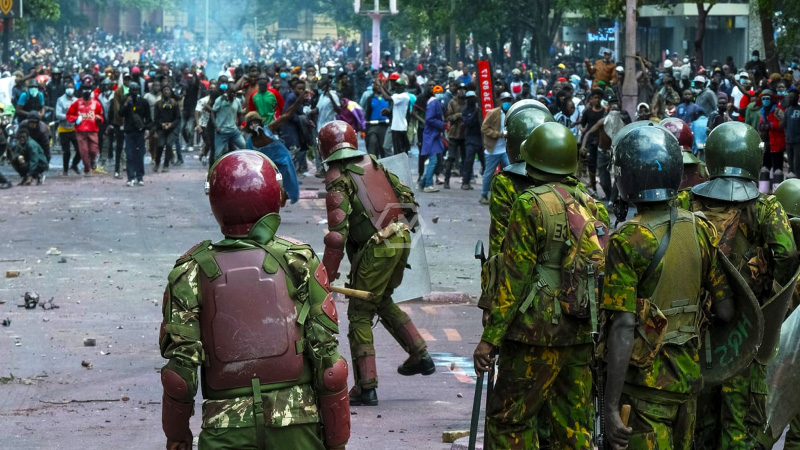- Kenyan government reverses tax hikes after deadly protests.
- Young Kenyans lead demonstrations demanding economic justice.
- International calls for accountability amidst escalating unrest.
In Kenya, recent protests led by young citizens have forced the government to retract contentious tax increases following violent clashes that resulted in numerous fatalities and injuries. President William Ruto‘s administration initially took a hardline stance against the demonstrators but later reversed course amid mounting pressure and criticism both locally and globally.
The protests, characterized by widespread youth participation, reflect deep-seated frustrations over economic hardships and governance issues, further exacerbated by the government’s handling of the situation, including accusations of excessive force by security forces.
Kenya’s Political Landscape: From Protests to Policy Reversals
The aftermath of the protests has left Kenya grappling with a delicate balance between appeasing public outrage and addressing fiscal challenges. Ruto’s decision to withdraw the tax bill has created a significant budgetary gap, raising concerns about the country’s ability to fund essential development programs and service its substantial national debt. International observers, including the United Nations and various human rights organizations, have called for accountability for the violence and emphasized the need for dialogue to prevent further escalation of tensions.
The protests underscore broader socio-economic grievances among Kenya’s youth, who are demanding accountability and substantive reforms from a government grappling with both fiscal constraints and international pressure. The decision to rescind the tax bill has left a significant void in government revenue, complicating efforts to sustain critical development initiatives and manage Kenya’s substantial national debt. Amidst calls for justice and investigations into alleged human rights abuses during the protests, the Ruto administration faces mounting challenges in reconciling public discontent with the imperative of economic stability and growth.
The events in Kenya highlight a pivotal moment in the country’s political trajectory, marked by citizen activism, governmental recalibration, and international scrutiny. As Kenya navigates the aftermath of these protests, the path forward hinges on transparent dialogue, fiscal prudence, and a renewed commitment to addressing the socio-economic aspirations of its youthful population.
“You cannot kill all of us.”
– Hanifa Adan



